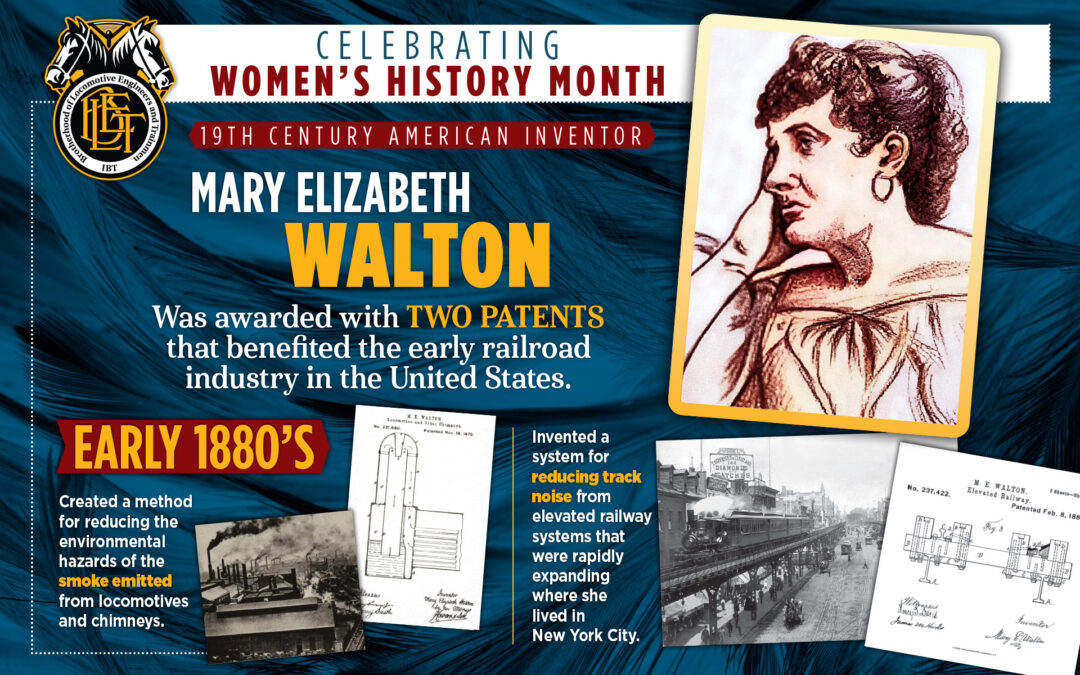Mary Elizabeth Walton was a 19th century American inventor who was awarded with two patents that benefited the early railroad industry in the United States. In 1881, she created a method for reducing the environmental hazards of the smoke emitted from locomotives and industrial/residential chimneys. The system deflected the emissions into water tanks that were retained and later flushed, helping to reduce air pollution and cancer-causing coal smoke.
Walton also invented a system for reducing track noise from elevated railway systems that were rapidly expanding where she lived in New York City. Walton decided to pursue a solution after hearing that Thomas Edison had tried and failed. After experimentation and research, she was able to narrow down that much of the sound was a result of amplification from wooden support boxes. She invented a system that deadened the noise by cradling the tracks in a wooden box lined with cotton and filled with sand. The rights to her invention, patented in 1881, were sold to the Metropolitan Railroad for $10,000 and the system was soon adopted by other elevated railway companies.

